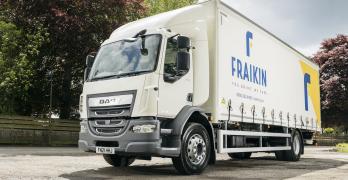Seasonality and large variations in activity: what are the levers for adapting to all scenarios ?
- 06/02/23
- 3 min
Although their business is often subject to economic contexts or seasonality, retail companies must always respect the quality and timeliness of their deliveries. In this context, how can you make your vehicle fleet more flexible? What are the solutions for staying flexible and adapting to all scenarios?

Many retail companies will never have had as many deliveries to make as they did during the lockdown period we have just experienced. According to a survey conducted by Kantar for Detail Online in France, Germany and Great Britain, the proportion of consumers who usually make more than half of their purchases online has increased by between 25% and 80%, depending on the country, since the start of the coronavirus crisis. Aside from this unusual period, many companies also have a seasonal calendar. This is the case for large toy retailers, whose activity essentially peaks around the holiday season. To ensure that they always have the right number of vehicles to guarantee their deliveries whatever their size or level of activity, they can use a number of levers depending on the size of their fleet.
Increase or decrease in activity: capitalise on your LTR fleet
First of all, companies can adapt to a significant increase or decrease in their activity by making the most of their long-term rental fleet. Companies with a large fleet of vehicles, for example, have the option to distribute or reallocate their vehicles across their various sites, as each one’s level of activity changes. This is the case for some specialist retailers who, for example, in summer, send vehicles from their Paris sites to those on the Atlantic coast where the activity is more concentrated.
If the activity decreases and some vehicles have been driven less than originally envisaged, there is also the option of extending the length of the rental contract, which is based on duration and mileage, to reach the mileage limit. This approach eliminates the risk of undersizing your fleet and finding your vehicles numbers insufficient to honour your deliveries on time when the activity recovers or peaks.
Conversely, to avoid oversizing your fleet of long-term rental vehicles in response to a temporary increase in activity, you can also double the number of drivers and organise shift rotations. Some companies also try to ensure that delivery of their new long-term rental vehicles coincides with their seasonal activity. For a few weeks, they can then use their old vehicles, having delayed their return, as well as their new ones.
Opting for a combined approach: combining LTR with STR
If the variability offered by long-term rental is not sufficient, in the event of increased activity which may last several weeks there is still the option to take on additional vehicles. Retailers can also remain agile during one-off peaks in activity by using short- or medium-term rental. These rental options provide a flexible response for companies needing to deal with a temporary increase in their activity, as was the case during the lockdown period, and also to provide a vehicle for temporary staff or those working a trial period. They also enable a vehicle to be replaced following a breakdown or accident.
Finally, companies that cannot or do not wish to adapt their vehicle fleets temporarily have the option to outsource all or part of their deliveries to a carrier.
Also worth reading

The domino effect of geopolitics on automotive supply chains

Transport: The promise of hydrogen

